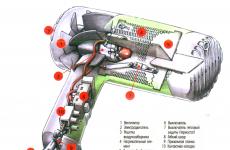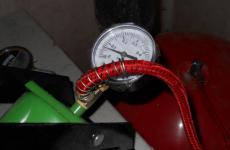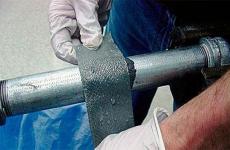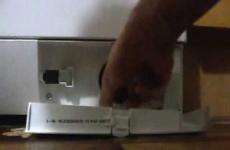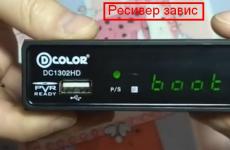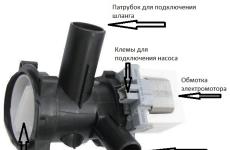Which cable is better: seven practical ways to test quality
Even the best antenna will fail if you are using a poor quality TV cable. And together with its illiterate laying, problems with the correct reception of television signals will certainly arise. As a rule, information about it is included in its specification or printed directly on the outer shell. However, we cannot always verify this data, and it happens that even this information is not always reliable! How do you understand which TV cable is better? All you need is basic knowledge and a little observation - below we offer 7 practical ways.
Coaxial cable consists of several components that determine its properties and quality. It consists of two conductors, the axes of which are combined, that is, they coincide. This is the principle of coaxiality (alignment). The outer conductor shields the inner conductor.
How does it work
The standard structure of a coaxial is as follows: a metal core (as a rule, it is a strand of a copper conductor), a dielectric made of polyethylene or Teflon (rarely), an outer conductor: a braid of twisted wires (an option is an additional metallized layer, foil and copper braid), PVC sheath. 
- inner conductor, affects the quality of signal transmission;
- dielectric - a layer of plastic;
- metallized layer (a combination of copper and polyester or a combination of aluminum and polyester);
- metal braid, the denser its weaving, the higher the quality;
- outer sheath for protection against moisture and radiation, on it you will find the manufacturer's mark.
Where is used
Coaxial cable is used for:
- signal reception - TV, FM-radio;
- signal transmission: 1.8 MHz to 3 GHz;
- for high frequency connections between devices;
- in data transmission networks, in measuring instruments.
Which cable should I use for my TV? Definitely high quality. Quality is a parameter that cannot be neglected, especially when it comes to receiving a digital signal. Here is the relationship: if you have good reception, but the signal is not important, the transmitted image will be distorted. Conversely, quality transmission will not make up for poor reception quality.
Coaxials, as they are often called, are characterized by generally accepted criteria:
- resistance (Ohm);
- signal attenuation (losses at 10, 100 and 1000 MHz, indicated in dB per 100 m);
- permissible power or maximum operating voltage (kV);
- wave propagation coefficient.
Choosing a TV cable will also be correct for the following characteristics:
- diameter of the cable cord (mm);
- flexibility;
- dielectric material;
- material of execution of the outer insulating layer.
The most common coax for home use is flexible and has a diameter of 6 mm. And this is justified: with rigid cables, problems can arise if their laying requires small bending radii.
Larger coaxial diameters are designed to transmit higher powers. Their black outer shell indicates that they are for external use, because they are protected from the damaging ultraviolet radiation. White coated cable products are used indoors as they resist burning.
Marking
When you buy a domestic product, there are usually no difficulties with its designation.
- RK - radio frequency cable;
- 75 - conductor resistance 75 Ohm;
- 4.8 - diameter;
- 34 - the first number shows the insulation group, the heat resistance category. The second digit is the serial number of the development;
- TU - technical manufacturing conditions.
But the labeling of imported cables can be confusing. Meanwhile, here is the definition of Western standards:
- DELINK - manufacturer;
- SAT-752 - name;
- Cu / Cu - material of the center conductor and braid (Cuprum - copper);
- 1.13 - thickness of the central core;
- 0.12 * 64 - thickness and density of the braid;
- Cu-foil - full copper;
- Coaxial cable - coaxial cable;
- 75 OHM - conductor resistance 75 Ohm;
- ISO 9001-2000 - certificate of conformity.
Choosing quality
So how will you test the quality of your cable? For the following seven signs!
Appointment
Outer insulation not only resists external influences and mechanical damage - what it is made of largely determines the properties of the cable wire.
The most commonly used PVC coating for cable cords. You can choose them for wiring in the apartment. The light-stabilized polyethylene cover features outdoor cords. In addition, outdoor cables have a protective gel layer from weather and sunlight. By removing a section of insulation, you can see if there is a gel-like lubricant underneath that protects the inner surface of the cable from moisture.
Outer sheath strength
Just try to remove the outer layer by hand. If the PVC or PE coating is weak, easily slides off the braid or foil layer, lengthening and stretching, this no longer guarantees sufficient strength of the cable.
Shielding layer quality
The shielding layer is an aluminum or copper foil wound on a dielectric. Its task is to shield the signal passing inside the cable from external electromagnetic waves that can interfere. It also prevents the signal from getting outside so that it does not weaken. For both conditions to be met, the foil must be glued to the dielectric layer. This can be easily verified by removing part of the shell and examining the shielding layer. If the foil moves freely along the dielectric layer, this means that it has not been glued, which means that when laying, when it is necessary to bend the wire properly, the film will slightly open the dielectric and create an unprotected "gap" through which signals will penetrate.
Braid density
The most common braiding is copper or aluminum wire mesh with a diameter of about 0.12 mm. The higher the density of the braid (more wires), the higher the electromagnetic density of the cable. This is another barrier to protect the transmitted signal from interference.
At first glance, the density of weaving is not easy to assess. Pay attention to the interlacing of the hairs, at what angle? If they are laid freely, longitudinally, then we are dealing with a thin braid. And vice versa, if they form a dense mesh covering the entire wire, then the covering of the braid is dense, "sealed". The signal will be under reliable protection.
Dielectric test
The dielectric is a polymer layer made mainly of polyisobutylene. It is important that this material is foamed in a physical way. Foaming chemically does not have a long-term effect - after a few years, the dielectric will collapse. A brittle dielectric is one hundred percent risk of displacement of the central core and loss of coaxiality. You cannot use such a wire for.
Unfortunately, the nature of such foaming is difficult to analyze without special tools. But is it possible to check whether the dielectric is dense and whether it is well "welded" to both the core and the foil (screen)? This is key when bending the cable and determines its allowable bending radius.
Coaxial class
The cable class characterizes the degree of electromagnetic leakage. The higher the class, the greater its density and resistance to external interference. Higher tightness is achieved by choosing the type and number of screens and braids used. Distinguish between cable wires:
- two-layer - two layers inside: foil + braid;
- three-layer - foil + braid + foil;
- four-layer - braid + foil + braid + foil.
Of course, the more the number of layers, the higher the electromagnetic density, the higher the class and quality of the cabling. To choose the right TV cable, you need to see what class of it we are dealing with. It is enough to "clean" it layer by layer, reaching the dielectric.
Core type and thickness
The type of inner core and its thickness are directly related to the signal attenuation in the cable. Low attenuation cables maintain consistent signal quality along their entire length to the receiver.
Coax cores can be made of copper or copper-plated steel. Copper has better conductive properties and reduces resistance to electrical charges. Therefore, it is more commonly used in various types of cables. In turn, the diameter of the wire increases the active conducting surface and decreases the resistance for these charges.
If the core is soft, and after a little scraping or notching, it does not change color, you can be sure that you are dealing with copper wire. However, if the center wire is rigid, and after cleaning the top layer of copper, the silvery color of the steel is clearly manifested, then this is a copper-plated wire.
Let's sum up
If the moment has come to choose, it is better to choose the cable that fulfills all the conditions mentioned:
- inner core thickness exceeds 1 mm;
- the shielding film is glued to the physically foamed dielectric;
- has triple or quadruple insulation;
- the density of the braid is at least 64% (densely spaced wires with a thickness of at least 0.12 mm);
- the coating of the outer insulating layer is adapted to the purpose of the cable;
- the maximum attenuation at frequencies of 862 MHz and 2150 MHz, respectively, is lower: 21 dB and 32 dB (parameter for 100 meters of wire).
By making your choice of antenna cable according to these rules, you can be sure that you are dealing with a product of excellent quality that you can count on performing, both for analog and for.

